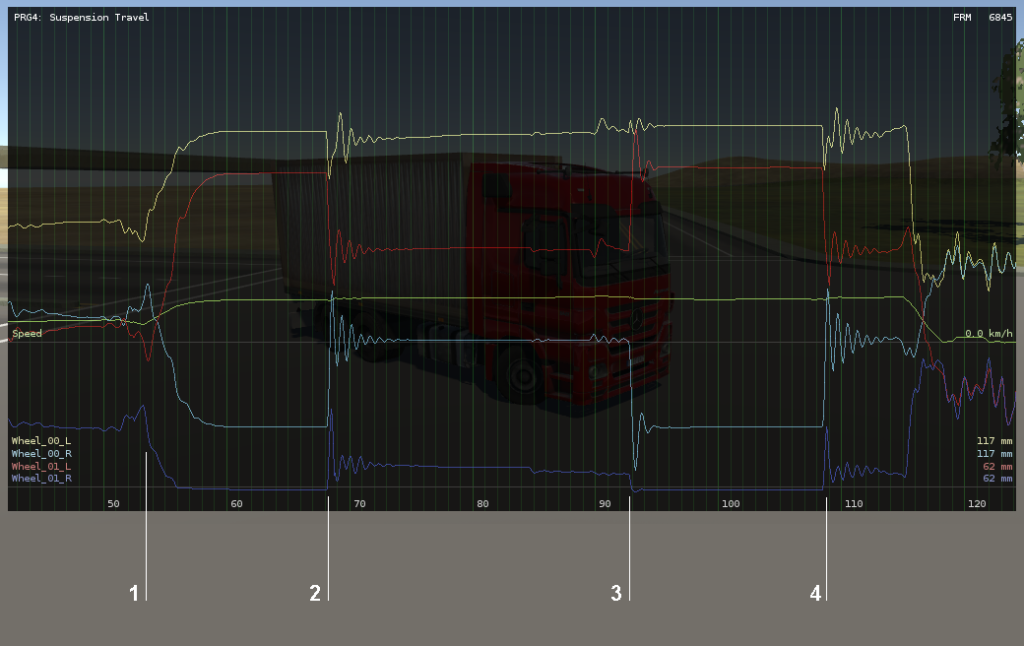I’ve just implemented anti-roll bars in Vehicle Physics Pro. Here you can see the effect of this component graphically:
In this chart the horizontal axis is time and the vertical axis is the distance to the suspension limits. The higher the line, the more extended the suspension. The lower the line, the more compressed the suspension. If the line touches the lower bound then that suspension is fully compressed and it’s hitting the bounds.
These are the events we can see at this chart:
- The vehicle begins a strong turn to the left. The outer suspensions get compressed (blue and cyan lines), while the inner suspensions get extended (yellow and red lines). The rear right suspension compress so much that it hits the bounds (blue line below the limit).
- The anti-roll bar component is enabled. This anti roll bar is applied on the front axle only. Thus, the outer front suspension (cyan) is suddenly extended. It also has the effect of taking the outer rear suspension out of the limit, as well as balancing the entire rear axle, greatly improving the vehicle’s stability during the turn.
- The anti-roll bar is disabled. The suspension returns to the previous state without anti-roll bar.
- The anti-roll bar is enabled again, and the vehicle gets balanced. The strong turn comes to an end.
Anti-roll bars are a great device used in most cars for improving handling and safety. They can now be used in Vehicle Physics Pro as well.

It Is Very Nice.
Hey will you add tire deformation?
@Kekal no, that’s not planned. That kind of tire deformation requires a custom physics engine, it’s very expensive in terms of performance, and apart of the visual thing when running over obstacles it provides little improvements (if any) to a proper tire friction model.